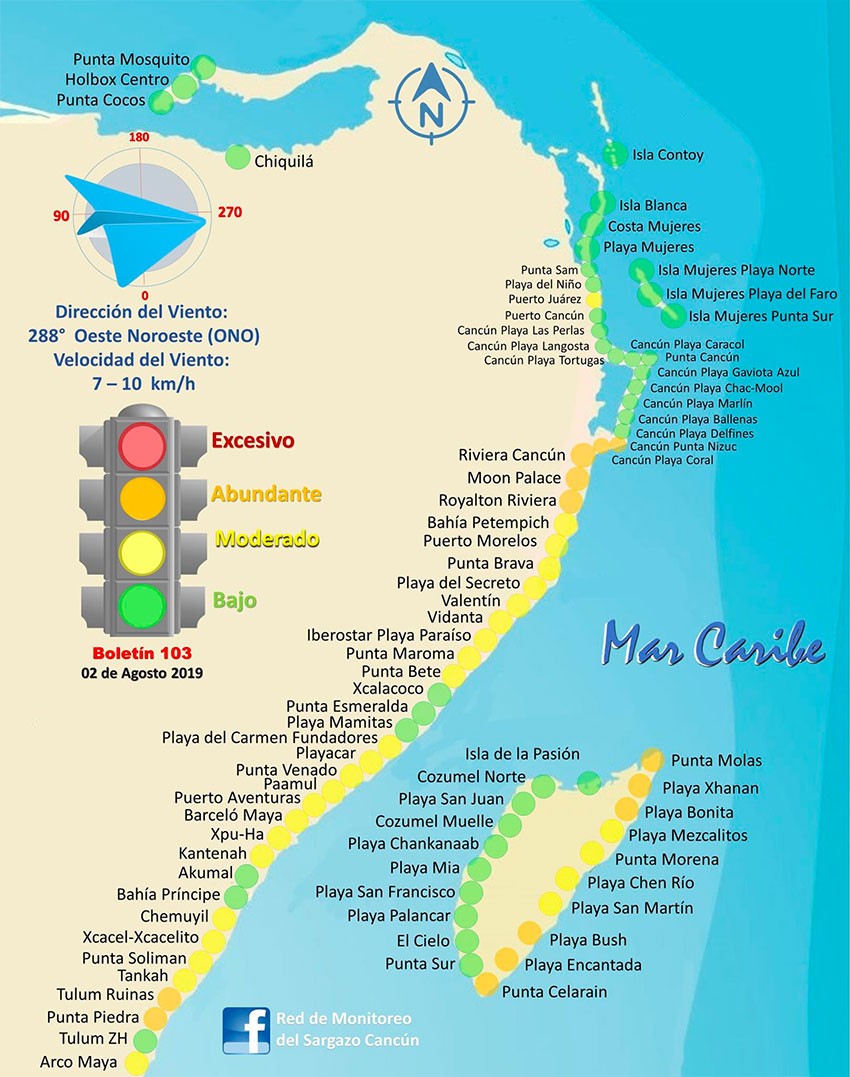The sargassum problem will be resolved in six weeks, Navy Secretary José Rafael Ojeda declared yesterday.
Speaking at the presidential press conference, Ojeda said that the joint efforts of the navy – which in early May was given responsibility for combatting the seaweed’s arrival – and the public would ensure that beaches are sargassum-free in a month and a half.
The coastline of the northern municipalities of Isla Mujeres, Benito Juárez (Cancún), Puerto Morelos and Solidaridad (Playa del Carmen) are already free of the seaweed, he said.
Today’s report from the Cancún sargassum monitoring network shows that no beaches between Tulum and the north of Quintana Roo are affected by excessive amounts of seaweed compared to 33 at the start of last week.
The network said conditions at beaches in Cancún and the Riviera Maya are “improving considerably” every day thanks to ocean currents and a radical change in the direction of prevailing winds.

Ojeda said that 57,603 tonnes of sargassum were collected from beaches between May and July and 287 tonnes were removed from the sea. A total of 10,701 people contributed to the clean-up efforts, he added.
Ojeda said the navy is in the process of purchasing three tractors, four sweepers and containment barriers with a combined length of 4,000 meters to assist with the anti-sargassum efforts. The navy is also building four sargassum-gathering vessels.
The navy secretary said that the first vessel will be ready in October and the other three will be completed soon after.
Although at least one scientist has warned that decomposing sargassum is a serious environmental problem, Ojeda discounted the warning, saying that a study has shown it has had no negative effect on the beaches of Quintana Roo.
President López Obrador, who in June said that sargassum wasn’t a very serious problem, told reporters yesterday that his government was always confident that there was a solution to the seasonal arrival of the smelly and unsightly seaweed.
“. . . What we did is establish order. Politics was invented to establish order,” he said.
However, the head of the Cancún sargassum monitoring network said last week that the navy’s strategy is not effective in preventing the arrival of seaweed on Quintana Roo beaches.
“The navy’s efforts are almost being exceeded. I believe that the navy has [just] one [sargassum-gathering] vessel and obviously for 700 kilometers of coast in Quintana Roo, it’s not enough . . .” Esteban Amaro said.
“. . . Most of the sargassum is being collected from the beaches and only a minimal amount is being contained at sea.”
Source: El Economista (sp)
